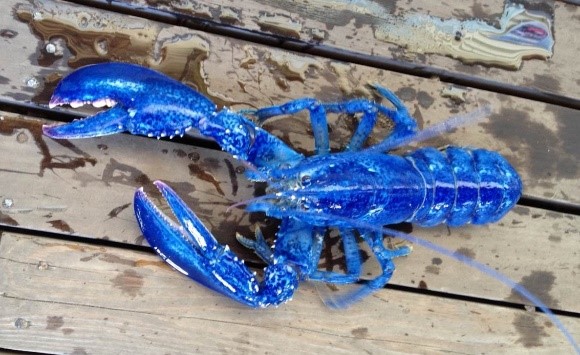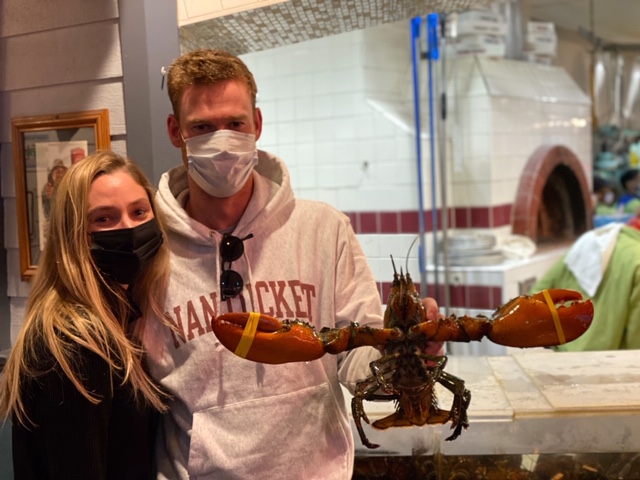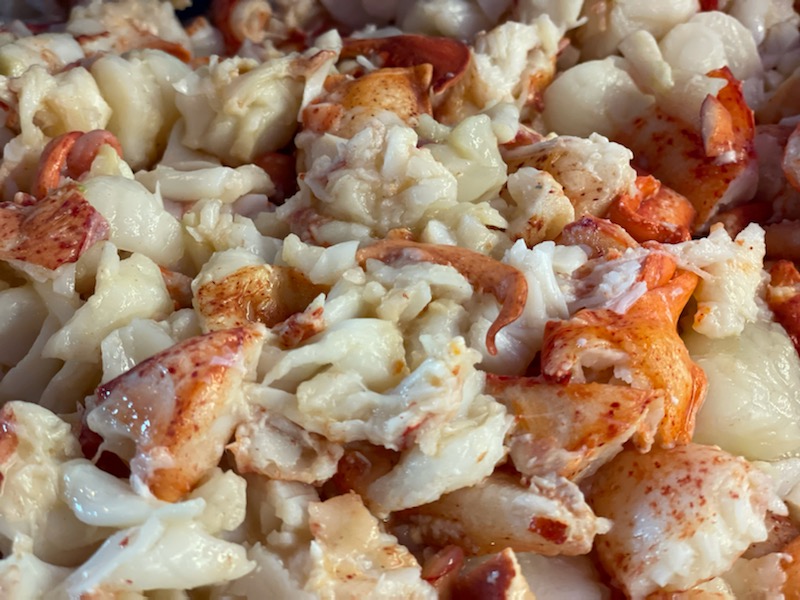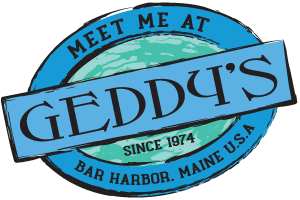Maine Lobsters – Top Ten Facts You Might Not Know | Geddy’s
Did you know that 90% of the country’s lobster supply comes from Maine? The state produces 100 million pounds of delicious lobster each year – caught by local fishermen who carry on the tradition. It is the state’s fourth largest industry.
So, what are the top ten facts that you might not know about our famous crustacean, the Maine lobster? Check it out …
1) Maine Lobster: Why does the state produce the tastiest lobster?
While there are 49 species of lobster in the world, it is the Maine lobster that is the most highly coveted species because of its sweet and tender meat. Additionally, Maine lobster has a less salty taste than other lobsters as a result of the cold-water temperatures of the Northeast. The lobster meat is also low in fat and high in heart-healthy omego-3 fatty acids … and oh so yummy!

2) Lobster Color in Maine: What Color is Your Lobster?
Maine lobster (also referred to as American or Northern lobster) has a greenish brown color. However, lobsters can also be found in a variety of other colors too, including calico, red, orange, and light yellow. Even after shedding their shells, lobsters retain their original color.
Of all the colors, white lobsters are the rarest in the world. The probability of finding a white lobster is 1 in 100 million. There are also rare two-tone lobsters, split down the middle – one side white and the other side orange. The probability of finding a two-tone split color is 1 in 50 million. While admired for its beautiful cobalt blue color, the blue lobster is the most common of the rare colors with a 1 in 2 million chance of catching one. However, blue lobsters are reputed to grow, at least, twice as fast as those with the greenish brown tone. So, a 1lb blue lobster is estimated to be 2 – 3 years old. Whereas, a 1lb greenish brown lobster is 6-8 years old. Bottom line: the growth of a lobster is determined by a variety of factors, including genes, sex, food source, water temperature, the environment, … and the color of its shell.
Does the color of the lobster influence the taste? No, there is no difference in taste between a blue or a greenish brown lobster. In fact, all lobsters turn bright red in hot water after cooking – due to a protein enzyme breakdown. So, once you cook a lobster, it is anyone’s guess as to its original color.
3) Sex and the Lobster: Female or Male?
One quick way to determine if a lobster is female or male is to examine the first pair of swimmerets or walking legs. If they are soft and feathery, it is a female. Hard and bony, you have a male.
In relationships, the female lobster is usually the aggressor when finding a mate. Additionally, she can only mate within 2-4 days of shedding her shell, which happens once a year or less in the summer or fall. The female lobster produces offspring every other year – generating between 3,000 to 75,000 eggs – depending on the mother’s size. Yes, that is 75,000 eggs!
However, very few larvae will survive within the first year due to predators, especially during the first four weeks. Maine has the most sustainable lobster fishery practices in the world to ensure that it continues to maintain a healthy lobster population.

4) Lobster Size in Maine: Does Size Matter?
To determine the length of a lobster, measure the back of the eye socket to where the carapace joins with the tail. The carapace is the armored-like shell on the body of the lobster – excluding claws, tail, and knuckles. In Maine, the minimum legal size of a lobster is 3 ¼ inches in length (usually about 1 pound) and the maximum size is 5 inches in length (about 3 – 5 pounds).
Each year, lobstermen fish 90% of legal-sized lobsters along the coast. In addition, smaller adult lobsters typically fall prey to codfish, shark, and other fish. Only one-in-ten lobsters make it to legal size … with the mortality rate being the highest during the first 4 weeks.
Most restaurants serve lobsters that are 1 – 1 ¼ pounds, referred to as “quarters.” “Selects” are lobsters between 1 ½ – 2 lbs. However, some restaurants, like Geddy’s, also offer jumbo lobsters (“jumbos”) – 2+ pounds and up. For some folks, jumbos are preferred because of their large claws that hold lots of succulent lobster meat.
5) Lobster Speed: The Tortoise or The Hare?
Lobsters do not move very quickly. They walk less than a mile an hour. While homebodies, they do typically wonder. In fact, in shore lobsters can travel 3 – 4 miles away from home. Offshore lobsters may travel greater distances – making seasonal migrations to shallow waters in the summer and deep water in the winter.
More than 20% of lobsters live offshore – dwelling in waters 200 miles off the coast with depths of up to 1,500 feet. They live in mud burrows on the ocean floor. Extremely large lobsters may be found offshore – some of which date back to the 1900s. To date, the oldest lobster ever recorded, named “Big George,” was estimated to be 140 years old. Yes, 140 years old!

6) Lobster Legs: These Legs are made for Walkin’
Lobsters are “Decapoda,” meaning that they have ten legs, including the two front claws. The back eight legs are used primarily for walking by the lobster. The front two larger ones include the crusher claw (larger one with teeth) and the cutter claw (sharper with finer teeth). The crusher claw is used for breaking the hard shell of crabs, clams, mussels, and snails – lobsters’ favorite meals. The cutter claw is intended for holding and tearing. Lobsters can be either right-handed or left-handed, depending on which claw gets the most exercise.
A lobster may lose one of its claws during molting or while in battle protecting its territory. Lobsters with one missing claw are referred to as “culls.” While a lobster can regenerate most of its limbs, it may take several molts before the claw reaches full size again.
7) Maine Lobsters: The Art of the Molt
Lobsters are “Arthropods.” So, they wear their skeleton or shell on the outside of their bodies, like an armored suit. The shell is segmented so that the lobster can more easily move about. Lobsters also shed their shell – called molting or egress. This process takes 5 – 20 minutes. If a lobster is of legal size or less, the lobster comes through 14% longer and 40% heavier after molting.
In the first year of life, lobsters shed their shell 10 times. Then, they molt 3-4 times in the second year … and 2 times in the third and fourth year. Thereafter, they typically shed their shell once a year in the summer or fall. Large lobsters only molt ever few years. Once the old shell has been shed, the lobster’s new shell starts to form within several hours – taking six to eight weeks for the new shell to harden.

8) Lobster Meat – The eternal debate, Hard Shell vs Soft Shell?
Hard Shell lobsters have a lot of meat – 20% more than Soft Shell Lobsters. Also, the meat has a firmer texture. In contrast, Soft Shell Lobsters, which are those that have recently shed their shell, retain more water … and, as such, have less lobster meat. Despite this, Soft Shell Lobsters are preferred by some because of their extremely sweet and tender taste.
9) Maine Lobster and Mister McGoo: What do they have in common?
As with Mr. McGoo, a lobster has terrible eyesight, especially at night. Since they are nocturnal animals, they rely heavily on their sense of smell, which occurs through their antennules and legs. This acute sense of smell is the lobster’s way of seeing the world, catching food, … and avoiding predators. However, it is not necessarily effective for steering clear of lobster traps.

10) Lobster Trapping in Maine – Year-Round or Seasonal?
In Maine, the abundance of lobsters is caught between June and December – primarily because of inclement weather and poor fishing in the winter and early spring. By December, most of the in-shore lobsters have been trapped with the remaining lobsters inactive due to the wintry weather.
Want to learn more about our famous Maine lobster? Check-out our other blogs, including “Maine Lobster: Fun Facts” and “15 Things About Maine Lobster.” You may also want to take an excursion on Lulu’s Lobster Boat for a lobster fishing ride and tour. Hungry for lobster yet? Experience World-Famous Geddy’s for the best seafood restaurant in Bar Harbor. Pick your own Maine lobster straight from the live tank and learn more about our famous crustacean. Dine on the freshest lobster in town – sipping on our famous local blueberry beer or one of our popular signature cocktails.
Bon Appetite … and Cheers for now, 🙂
Heather
(Owner)
www.geddys.com




